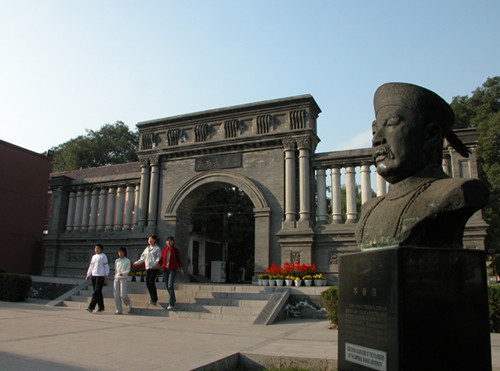
Shanxi University, established in 1902, is in Taiyuan, the capital of Shanxi province, which has a history of 2,500 years. The school itself can be traced back to Sanli College, of the Ming Dynasty (1368-1644), and Jinyang College and Lingde College, of the Qing Dynasty (1644-1912). In its early period, the school worked on integrating Chinese culture and Western culture and the arts and sciences. It had great flexibility in its management and advanced educational ideas, and was a cradle of higher education in China and a crucial center of culture, science, and education in Shanxi province for more than 100 years.
It survived the War of Resistance against Japanese Aggression (1937-1945), was relocated during the War of Liberation (1945-1949) and had a restructuring in 1953. Throughout all this, it maintained its tradition of "Knowing both East and West, seeking goodness and truth, valuing virtue and talent, and strengthening oneself and serving the country". It developed a school spirit of diligence, strictness, honesty, and creativity and had produced some excellent people for China and has contributed a lot to the cause of educating people and revitalizing the nation.
The past 100 years have been significant, especially after China's opening up and reforms of three decades ago, and the school has developed into a comprehensive university of the arts and sciences, with clear guidelines and great potential, with the country's emphasis on science and education. In 1998, it became a key university with provincial government backing and, in 2003, got excellent marks for its undergraduate teaching from the Ministry of Education. In 2012, it joined a national program, "Promoting the comprehensive strength of colleges and universities in Central-west China", becoming a new state-funded site for university development with distinct characteristics.
The campus covers 174 hectares, with 1,100,000 square meters of office and classroom space, and has two parts: a north part characterized by an elegant, traditional design, and a southern one with stylish modern buildings. It has at least 500-million yuan ($80.5 million) worth of teaching and research equipment and the library contains 3.62 million books and 2,535 GB e-books. It gained a Green Gardenlike School award from the provincial government and has a very human, serene atmosphere that is suitable for both study and living.
It covers many disciplines and 12 academic fields, with 90 undergraduate specialties and 17 undergraduate double-majors. There are three academic worksites, 14 post-doc research sites, 15 PhD disciplines, 37 master's degree disciplines, and 13 engineering master's degree disciplines. It also has two special PhD cross-disciplines that are not included in the Education Ministry's catalogue of disciplines.
It has key State-level laboratories, Education Ministry laboratories, Education Ministry humanities and social sciences research bases, and an Education Ministry approved engineering research center, giving it a solid academic and scientific research foundation. It also handles important national 973 Projects, national 863 Projects, and projects funded by the National Natural Science Foundation, and the Social Science Foundation, 16 of which have won awards, including a national Natural Science award, national Technological Innovation award, national Scientific and Technological Progress award, Outstanding Achievement in the Humanities award from the Education Ministry, a Social Sciences award for Chinese Higher Education Institutions, and an Education Ministry Natural Science award.
